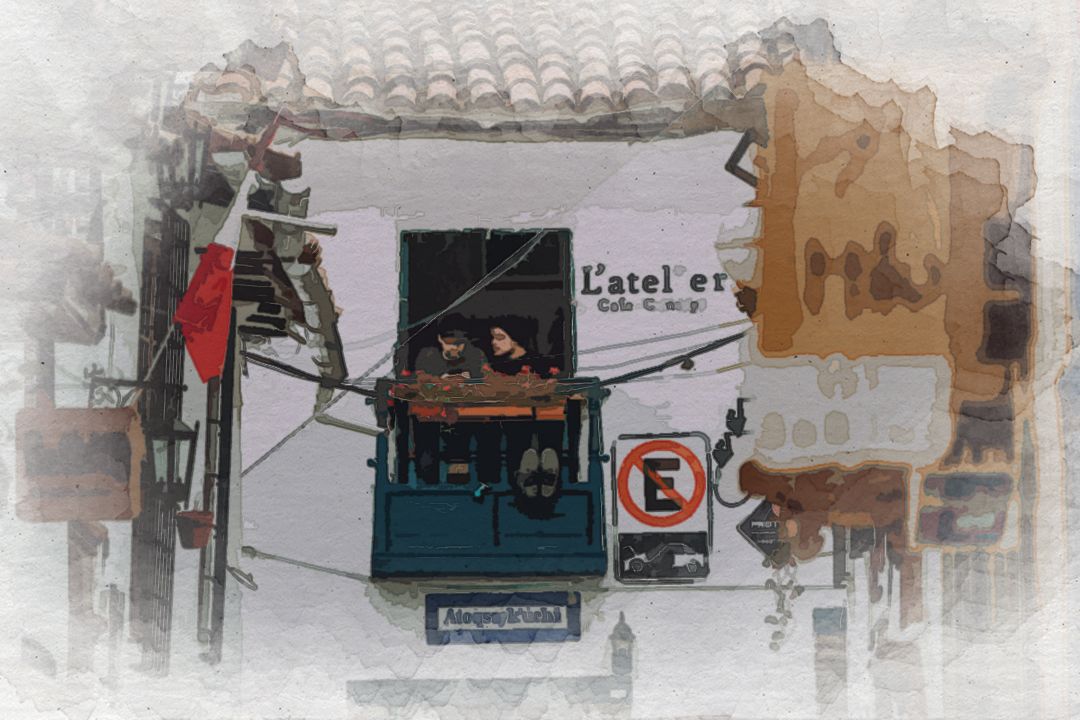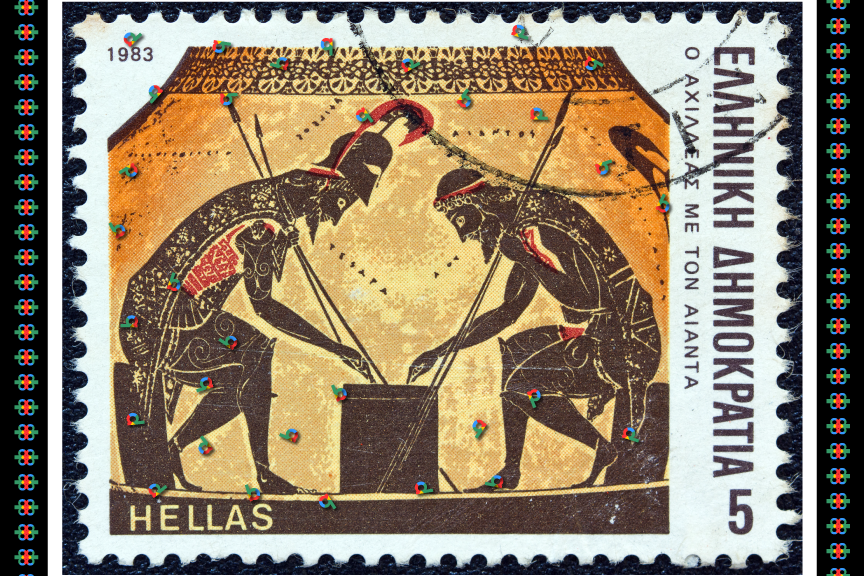chip, chip, chip-away...

Atelier is the Creator, The Artist and the planksip Founder - Daniel Sanderson
In a quaint, bustling town known for its vibrant arts scene and rich history, there resided an individual who was as much an enigma as he was revered. Known by the locals simply as Atelier, this person was not just an artist but a phenomenon that defied the conventional boundaries of creativity and intellect. His works, each a testament to an unparalleled vision, were not mere artifacts but conversations etched in various mediums.
In the heart of Atelier's studio, a sanctuary brimming with canvases whispering the tales of yore and future, stood a monolithic block of stone, untouched, unsculpted, seemingly waiting for its awakening. Much like a silent muse, this stone beckoned Atelier with a promise hidden within its cold, hard exterior. Michelangelo once proclaimed the philosophy that guided Atelier's hand: "Every block of stone has a statue inside it, and it is the sculptor's task to discover it." Inspired, Atelier embarked on a journey to carve stone and free the essence trapped within to reveal the story it yearned to tell.
Every block of stone has a statue inside it and it is the task of the sculptor to discover it.
— Michelangelo (1475-1564)
The town, usually pulsating with an unquestioning admiration for Atelier's work, began to watch with a mix of curiosity and skepticism. The artist's approach to the untouched stone, his unconventional methods, and the days turning into nights without hinting at the statue's form began to fuel whispers of doubt. It was a testing time, a crucible of belief and doubt. Atelier, in moments of solitude, found solace in the words of Arthur Schopenhauer: "All truth passes through three stages. First, it is ridiculed. Second, it is violently opposed. Third, it is accepted as being self-evident." These words were not just a mantra but a lens through which the unfolding drama of creation and criticism was viewed, a reminder that the path of true innovation is often laden with the stones of skepticism and misunderstanding.
All truth passes through three stages. First, it is ridiculed. Second, it is violently opposed. Third, it is accepted as being self-evident.
— Arthur Schopenhauer (1788-1860)
Undeterred, Atelier persisted, his chisel striking the stubborn stone with renewed purpose each day. The journey was not just about the physical act of sculpting but about the relentless pursuit of knowledge, the mastery of one's craft, and the unyielding commitment to one's vision. Anthony Trollope once remarked, "There is no royal road to learning; no shortcut to the acquirement of any art." These words rang true for Atelier as he navigated through the labyrinth of creation, where each misstep was a lesson and each success a mere milestone in the eternal quest for artistic and intellectual enlightenment.
There is no royal road to learning; no shortcut to the acquirement of any art.
— Anthony Trollope (1815-1882)
Weeks melded into months, and the block of stone, once inert and unyielding, began to whisper secrets of its latent form. Under Atelier's patient and persistent hand, what was once hidden began to emerge: contours of humanity, expressions of silent eloquence, and a narrative etched in stone. The sculpture's unveiling was an event and a moment of collective awakening for the town of Elara. Skeptics and supporters stood before the revealed masterpiece, a tangible manifestation of vision and perseverance, a silent testimony to Atelier's unwavering belief in the unseen beauty trapped within the stone.
In that moment of unveiling, the sculpture stood not just as a work of art but as a bridge between the artist and the observer, between skepticism and belief, between the seen and the unseen. The journey of the sculpture, from an unshaped block to a testament of human emotion and depth, mirrored the artist's journey. It was a reflection of life, a reminder that within every challenge lies an opportunity for growth, within every criticism, a kernel of truth, and within every individual, a wellspring of potential waiting to be discovered.
As the sun dipped below the horizon, casting long shadows over the plaza where the sculpture now stood, the words of Daniel Sanderson seemed to echo through the hearts and minds of those present: "Atelier is the Creator, The Artist and the planksip Founder." The journey of the sculpture, much like the journey of Atelier, was a testament to the enduring power of creativity, the relentless pursuit of understanding, and the unyielding spirit of human endeavour.
In the days that followed, the sculpture became more than just a point of interest in Elara; it became a symbol of transformation, a beacon for those searching for meaning and beauty. And as the narrative of the sculpture spread beyond the confines of the town, so did the legend of Atelier, the artist who dared to see beyond the stone, who navigated through ridicule and opposition to reveal a truth that became self-evident to all.
The story of Atelier and his sculpture serves as a timeless reminder that the journey of creation is fraught with challenges but also ripe with opportunities for growth and understanding. It underscores the belief that every individual has the potential to transcend the ordinary, uncover the extraordinary, and inspire a legacy that endures beyond the confines of time and space.
In the grand tapestry of life, where each thread intertwines with countless others, the narrative of Atelier and his silent stone stands out as a vibrant testament to the enduring power of art, the unyielding pursuit of knowledge, and the indomitable spirit of the human soul. It is a story that continues to resonate, a narrative that still inspires, and a legacy that forever remains etched not just in stone but in the annals of human history.

Figures of Speech Collection Personified
Our editorial instructions for your contest submission are simple: incorporate the quotes and imagery from the above article into your submission.
What emerges is entirely up to you!
Winners receive $500 per winning entry multiplied by the article's featured quotes. Our largest prize is $8,000 for rewriting the following article;

At Planksip, we believe in changing the way people engage—at least, that's the Idea (ἰδέα). By becoming a member of our thought-provoking community, you'll have the chance to win incredible prizes and access our extensive network of media outlets, which will amplify your voice as a thought leader. Your membership truly matters!


